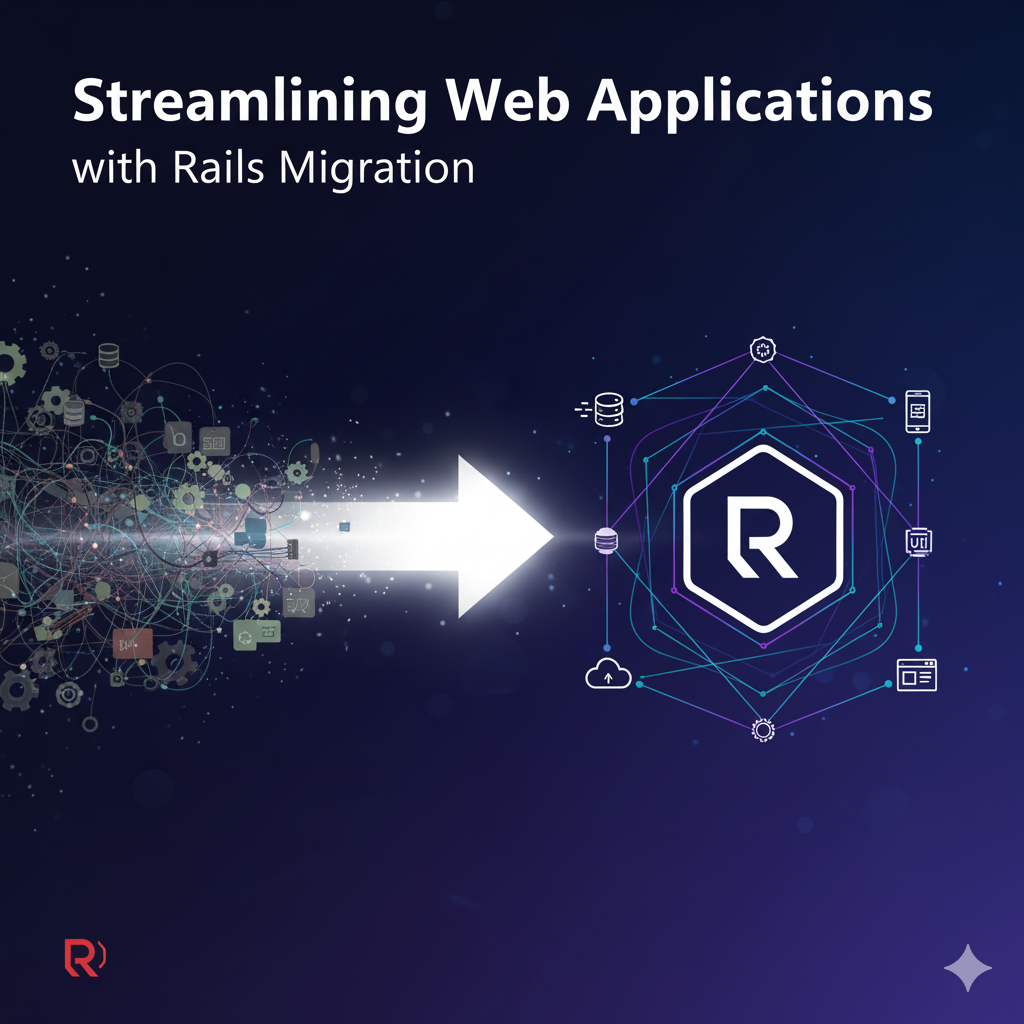Streamlining Web Applications with Rails Migration

For businesses looking to build dynamic and scalable web applications, understanding Rails Migration is essential. When partnering with a Ruby on Rails web development company, migrations play a crucial role in efficiently managing database changes while maintaining the integrity and performance of applications. Rails Migration simplifies schema evolution, allowing developers to adapt applications as business needs grow.
What is Rails Migration?
Rails Migration is a feature in Ruby on Rails that allows developers to modify database schemas incrementally. It enables the creation, alteration, and management of tables, columns, indexes, and constraints without manual database handling. This feature is especially valuable for companies offering Ruby on Rails web development services, as it ensures smooth database evolution and reduces the risk of errors during updates.
Migrations provide a version-controlled approach to database changes. Each migration file represents a specific set of changes, which can be tracked, rolled back, or reapplied. This system allows teams to collaborate effectively and ensures consistent database structures across development, staging, and production environments.
Benefits of Using Rails Migration
Simplified Database Management
One of the main advantages of Rails Migration is its ability to simplify database management. Developers can define changes in Ruby code rather than writing complex SQL scripts. This abstraction makes it easier to implement and maintain changes across multiple environments, ensuring consistency and reducing human error.
Version Control and Collaboration
Rails Migration integrates seamlessly with version control systems like Git. Each migration is timestamped, providing a clear record of database changes. This approach allows multiple developers to collaborate efficiently, avoiding conflicts and ensuring that every update is documented and reversible.
Improved Application Flexibility
With Rails Migration, businesses can adapt their applications to evolving requirements without extensive downtime. Adding new tables, modifying columns, or restructuring indexes can be accomplished seamlessly, allowing applications to scale alongside growing business needs.
Key Features of Rails Migration
Creating and Modifying Tables
Rails Migration allows developers to create new tables or modify existing ones with minimal effort. By writing clear and concise Ruby code, developers can define columns, data types, default values, and constraints in a standardized format.
Indexing for Performance
Adding indexes to frequently queried columns improves application performance. Rails Migration makes it simple to define and manage indexes, ensuring that applications remain fast even as data volume increases.
Rolling Back Changes
One of the most powerful features of Rails Migration is the ability to roll back changes. If a migration introduces errors or unintended consequences, developers can revert to a previous database state, maintaining application stability and minimizing downtime.
Best Practices for Rails Migration
To maximize the benefits of Rails Migration, developers should follow best practices:
- Write Clear and Concise Migrations: Ensure each migration focuses on a specific change for easier tracking and maintenance.
- Test Migrations Thoroughly: Always test migrations in a staging environment before applying them to production.
- Use Version Control Effectively: Commit migration files alongside corresponding code changes to maintain consistency.
- Keep Migrations Small and Incremental: Large, complex migrations can be error-prone and harder to manage.
Real-World Applications of Rails Migration
Rails Migration is widely used across industries to maintain scalable and robust applications:
- E-commerce Platforms use migrations to manage product catalogs, customer records, and order histories.
- Financial Applications rely on migrations to handle transaction logs, reporting tables, and auditing features.
- Healthcare Systems implement migrations for patient records, appointment management, and regulatory compliance.
These examples demonstrate how Rails Migration ensures data integrity and flexibility, enabling businesses to respond quickly to evolving requirements.
The Impact on Ruby on Rails Web Development Services
For companies providing Ruby on Rails web development services, understanding and utilizing Rails Migration is crucial. It streamlines database management, improves collaboration among developers, and allows applications to scale efficiently. Businesses can launch new features faster, maintain consistent database structures, and deliver a reliable user experience.
Conclusion
Rails Migration is a vital tool for modern Ruby on Rails applications. It enables businesses to manage database changes efficiently, maintain version control, and adapt to evolving requirements. By leveraging migrations, companies offering Ruby on Rails web development services can build scalable, flexible, and high-performing applications. For expert guidance and professional implementation of Rails-based solutions, partnering with a Trusted software development company ensures seamless database management and robust application development.
- Art
- Causes
- Crafts
- Dance
- Drinks
- Film
- Fitness
- Food
- Oyunlar
- Gardening
- Health
- Home
- Literature
- Music
- Networking
- Other
- Party
- Religion
- Shopping
- Sports
- Theater
- Wellness




